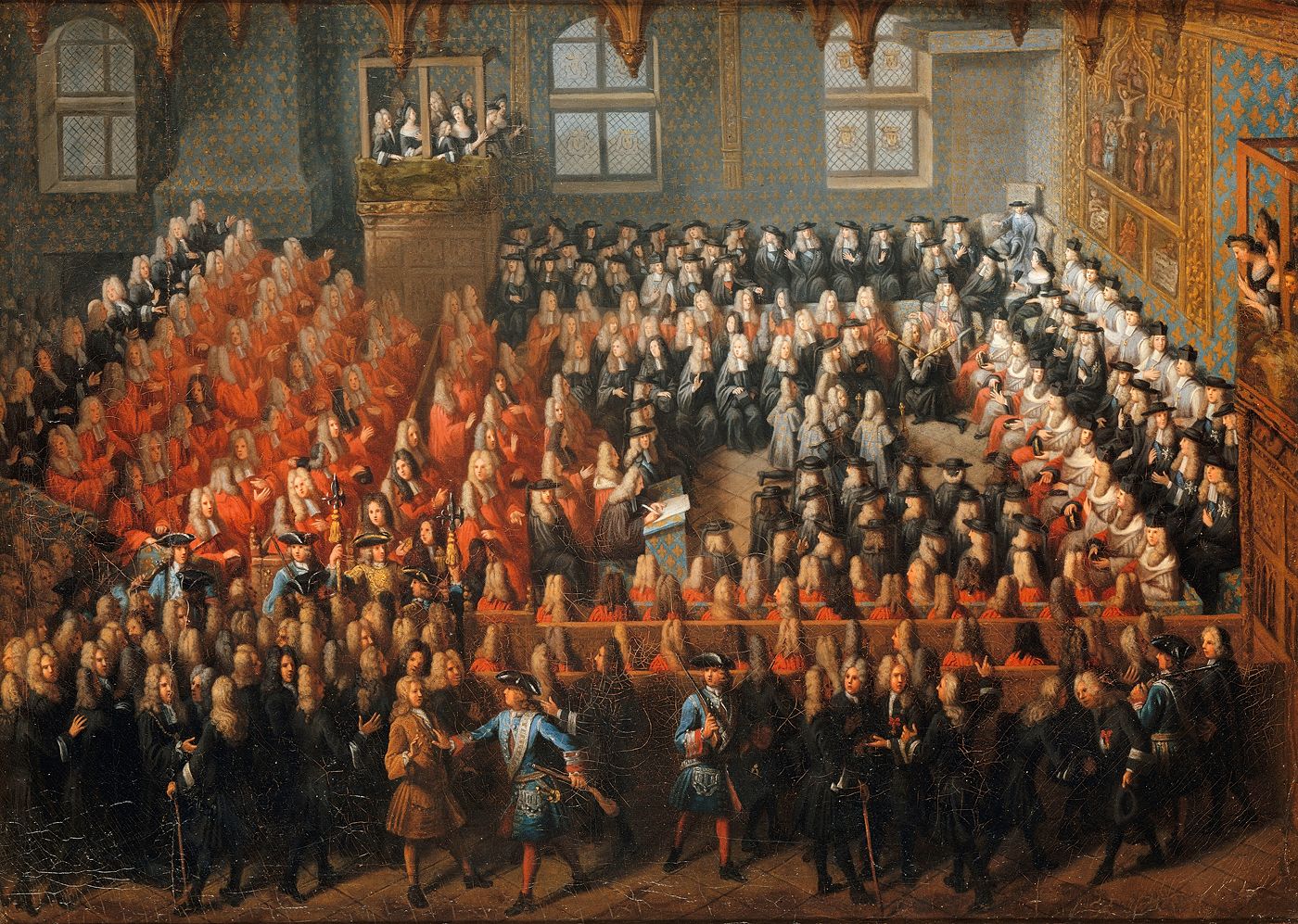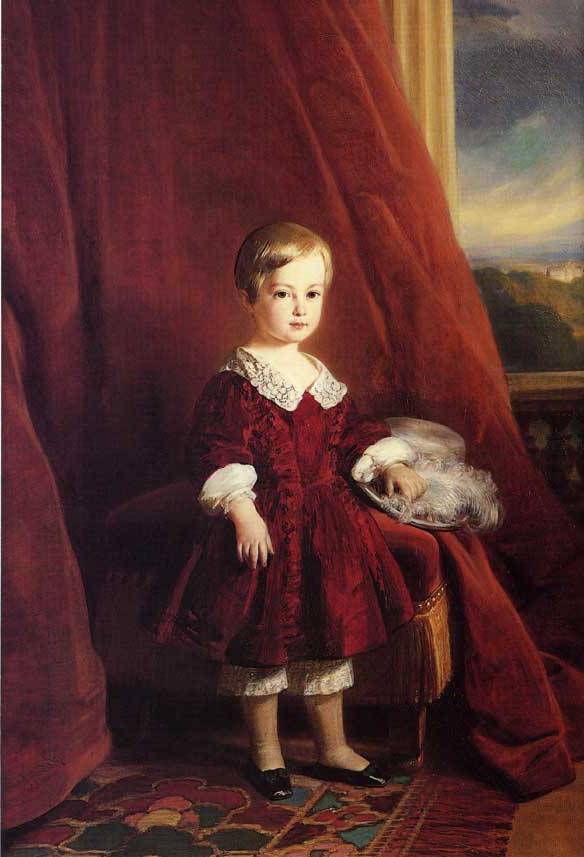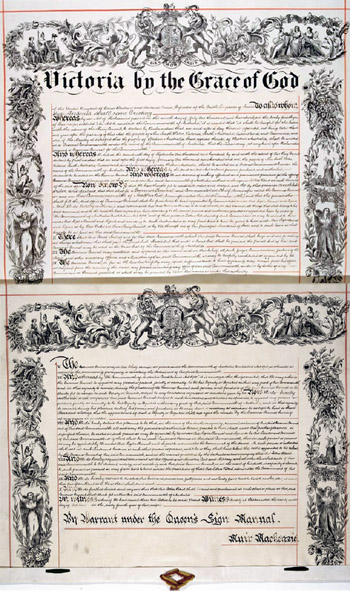|
Succession To The Former French Throne (Orléanist)
The Orléanist claimant to the throne of France is Jean, Count of Paris. He is the uncontested heir to the Orléanist position of "King of the French" held by Louis-Philippe, and is also considered the Legitimist heir as "King of France" by those who view the 1713 Treaty of Utrecht (by which Philip V of Spain renounced for himself and his agnatic descendants any claim to the French throne) as valid. According to the Family Compact of 1909, only the descendants of Henri, Count of Paris (grandfather of the current pretender) are considered to be French dynasts. The founders of the cadet branches of Orleans-Braganza and Orléans-Galliera, by becoming foreigners, are considered under house law to have lost their rights to the throne.Velde, Francois. Heraldica.org, 2000The 1909 "Pacte de Famille" of the House of Orléans retrieved 4 September 2010 Rules explaining the order of succession Succession under the Ancien Regime Prior to the Treaty of Utrecht, rules of succession to the ... [...More Info...] [...Related Items...] OR: [Wikipedia] [Google] [Baidu] |
Orléanist
Orléanist () was a 19th-century French political label originally used by those who supported a constitutional monarchy expressed by the House of Orléans. Due to the radical political changes that occurred during France in the long nineteenth century, that century in France, three different phases of Orléanism can be identified: * The "pure" Orléanism: constituted by those who supported the constitutional reign of Louis Philippe I (18301848) after the 1830 July Revolution, and who showed Liberalism, liberal and moderate ideas. * The "fusionist" (or "unionist") Orléanism: the movement formed by pure Orléanists and by those Legitimists who after the childless death of Henri, Count of Chambord in 1883 endorsed Prince Philippe, Count of Paris, Philippe, Count of Paris, grandson of Louis Philippe, as his successor. The fusion drove the Orleanist movement to more conservative stances, emphasising French nationality (rejecting claims to France of the Spanish Bourbons on account of ... [...More Info...] [...Related Items...] OR: [Wikipedia] [Google] [Baidu] |
Parlement Of Paris
The ''Parlement'' of Paris () was the oldest ''parlement'' in the Kingdom of France, formed in the 14th century. Parlements were judicial, rather than legislative, bodies and were composed of magistrates. Though not representative bodies in the present sense of the word, they had procedures and authorities that could delay the otherwise unchecked power of the King. Because of its location and history, the Parlement of Paris was the most significant. The Parlement of Paris was established under Philip IV of France in 1302. The Parlement of Paris would hold sessions inside the medieval royal palace on the Île de la Cité, which today is the site of the Paris Hall of Justice. History In 1589, Paris was effectively in the hands of the Catholic League. To escape, Henry IV of France summoned the parlement of Paris to meet at Tours, but only a small faction of its parliamentarians accepted the summons. (Henry also held a parliament at Châlons, a town remaining faithful to the king ... [...More Info...] [...Related Items...] OR: [Wikipedia] [Google] [Baidu] |
Prince Philippe, Duke Of Orléans (1869–1926)
Prince Philippe, Duke of Orléans (; 6 February 1869 – 28 March 1926) was the Orléanist pretender to the throne of France from 1894 to 1926 as Philippe VIII. Early life Philippe was born at York House, Twickenham, near London, Middlesex, England, United Kingdom of Great Britain and Ireland, the son of Philippe, Count of Paris, by his wife (and first cousin), Princess Isabelle of Orléans. He was baptised with the names ''Louis-Philippe-Robert'', and was called Philippe. His family lived in the United Kingdom from the abdication and banishment of his great-grandfather Louis Philippe, King of the French, in 1848, and returned to France in 1871 following the fall of the Second French Empire. However, they again took refuge in England in 1886, when the French Republic exiled them following the wedding in Paris of Philippe's sister Amélie of Orléans to Crown Prince Carlos of Portugal. Returning therefore to France in 1871 with his parents, Philippe was educated at home at th ... [...More Info...] [...Related Items...] OR: [Wikipedia] [Google] [Baidu] |
Antoine, Duke Of Montpensier
Antoine, Duke of Montpensier (Antoine Marie Philippe Louis d'Orléans; 31 July 18244 February 1890), was a member of the French royal family in the House of Orléans. He was the youngest son of King Louis Philippe of France and his wife Maria Amelia Teresa of the Two Sicilies. He was styled as the Duke of Montpensier. He was born on 31 July 1824 at the château de Neuilly and died 4 February 1890 at Sanlúcar de Barrameda, Spain. Marriage and issue On 10 October 1846 at Madrid, Spain, he married Infanta Luisa Fernanda of Spain, the daughter of King Ferdinand VII of Spain and Maria Christina of the Two Sicilies. They had ten children: # Maria Isabel (21 September 1848 – 23 April 1919), who married her first cousin Philippe, comte de Paris (1838–94), the French claimant, and became known as ''Marie Isabelle, comtesse de Paris.'' She had issue''.'' # Maria Amelia (28 August 1851 – 9 November 1870) # Maria Cristina (29 October 1852 – 28 April 1879) # Maria de la Regl ... [...More Info...] [...Related Items...] OR: [Wikipedia] [Google] [Baidu] |
Gaston, Count Of Eu
Prince Gaston of Orleans, Count of Eu (; 28 April 1842 – 28 August 1922) was a French prince and military commander who fought in the Hispano-Moroccan War and the Paraguayan War. He was the first son of Louis, Duke of Nemours and Princess Victoria of Saxe-Coburg and Gotha, and was married to Princess Isabel, daughter of Pedro II of Brazil and heiress to the Brazilian throne. Early years Gaston was born Louis Philippe Marie Ferdinand Gaston of Orléans (Portuguese: Luís Filipe Maria Fernando Gastão de Orleães) on 28 April 1842 in Neuilly-sur-Seine, a suburb of Paris, at the Château de Neuilly. He was the eldest son of Louis, the Duke of Nemours and Princess Victoria of Saxe-Coburg and Gotha. His paternal grandparents were King Louis Philippe I, King of the French, and Maria Amalia of the Two Sicilies, and his maternal grandparents were Prince Ferdinand of Saxe-Coburg and Gotha and Princess Maria Antonia von Koháry. A member of the French royal family, Gast ... [...More Info...] [...Related Items...] OR: [Wikipedia] [Google] [Baidu] |
House Of Orléans-Braganza
The House of Orléans-Braganza ( Portuguese: ''Casa de Orléans e Bragança'') is by legitimacy, the imperial house of Brazil formed in 1864, with the marriage of the heir to the Brazilian throne, Isabel of Braganza with Prince Gaston, Count of Eu. The House of Orléans-Braganza never reigned, as Brazil's pure Braganza monarch, Emperor Pedro II being deposed in a military coup d'état, under the pressure of the civilian republicans, in 1889. However, with the death of Isabel in 1921, as the last Brazilian pure Braganza, her descendants inherited the dynastic rights of the Brigantine dynasty over the defunct Brazilian throne. Podesta, Don. 20 April 1993Claimants Dream of New Brazilian Monarchy Currently, the headship of the house is disputed between , agnatic senior member of the house, head of the so-called '' Petrópolis'' branch, and Bertrand of Orléans-Braganza, who heads the so-called '' Vassouras'' branch of the Imperial Family. The formation of these branches goes ... [...More Info...] [...Related Items...] OR: [Wikipedia] [Google] [Baidu] |
Henri, Count Of Chambord
Henri, Count of Chambord and Duke of Bordeaux (; 29 September 1820 – 24 August 1883), was the Legitimist pretender to the throne of France as Henri V from 1844 until his death in 1883. Henri was the only son of Charles Ferdinand, Duke of Berry, born after his father's death, by his wife, Princess Carolina of Naples and Sicily, daughter of King Francis I of the Two Sicilies. The Duke himself was the younger son of Charles X. As the grandson of Charles X, Henri was a . He was the last legitimate descendant of Louis XV of France in the male line. Early life Henri d'Artois was born on 29 September 1820, in the Pavillon de Marsan, a portion of the Tuileries Palace that still survives in the compound of the Louvre Palace in Paris. His father, the ''duc de Berry'', had been assassinated seven months before Henri's birth. At birth, Henri was given the title of ''duc de Bordeaux''. Because of his birth after his father's death, when the senior male line of the House of Bou ... [...More Info...] [...Related Items...] OR: [Wikipedia] [Google] [Baidu] |
Revocation
Revocation is the act of wikt:recall, recall or annulment. It is the cancelling of an act, the recalling of a grant or privilege, or the making void (law), void of some deed previously existing. A temporary revocation of a grant or privilege is called a suspension. Contract law In the law of contracts, revocation is a type of legal remedy, remedy for buyers when the buyer offer and acceptance, accepts a nonconforming goods, good from the seller. Upon receiving the nonconforming good, the buyer may choose to accept it despite the nonconformity, reject it (although this may not be allowed under the perfect tender rule and whether the Seller still has time to cure), or revoke their acceptance. Under Article 2 of the Uniform Commercial Code, for a buyer to revoke, he must show (1) the goods failed to conform to the contract ''and'' (2) it substantially impaired the value of the goods (this is a question of fact). A Proposal (business), Proposal/Offer and acceptance, Offer May be revok ... [...More Info...] [...Related Items...] OR: [Wikipedia] [Google] [Baidu] |
Letters Patent
Letters patent (plurale tantum, plural form for singular and plural) are a type of legal instrument in the form of a published written order issued by a monarch, President (government title), president or other head of state, generally granting an office, right, government-granted monopoly, monopoly, title or status to a person or corporation. Letters patent can be used for the creation of corporations, government offices, to grant city status or heraldry, coats of arms. Letters patent are issued for the appointment of representatives of the Crown, such as governors and governor-general, governors-general of Commonwealth realms, as well as appointing a Royal Commission. In the United Kingdom, they are also issued for the creation of peers of the realm. A particular form of letters patent has evolved into the modern intellectual property patent (referred to as a utility patent or design patent in United States patent law) granting exclusive rights in an invention or design. In ... [...More Info...] [...Related Items...] OR: [Wikipedia] [Google] [Baidu] |
Ratification
Ratification is a principal's legal confirmation of an act of its agent. In international law, ratification is the process by which a state declares its consent to be bound to a treaty. In the case of bilateral treaties, ratification is usually accomplished by exchanging the requisite instruments, and in the case of multilateral treaties, the usual procedure is for the depositary to collect the ratifications of all states, keeping all parties informed of the situation. The institution of ratification grants states the necessary time-frame to seek the required approval for the treaty on the domestic level and to enact the necessary legislation to give domestic effect to that treaty. The term applies to private contract law, international treaties, and constitutions in federal states such as the United States and Canada. The term is also used in parliamentary procedure in deliberative assemblies. Contract law In contract law, the need for ratification often arises in two ... [...More Info...] [...Related Items...] OR: [Wikipedia] [Google] [Baidu] |
Historical Powers
The term "great power" has only been used in historiography and political science since the Congress of Vienna in 1815. Lord Castlereagh, the British Foreign Secretary, first used the term in its diplomatic context in 1814 in reference to the Treaty of Chaumont. Use of the term in the historiography of the Middle Ages is therefore idiosyncratic to each author. In historiography of the pre-modern period, it is more typical to talk of empires. Gerry Simpson distinguishes "Great Powers", an elite group of states that manages the international legal order, from "great powers", empires or states whose military and political might define an era.Gerry Simpson, ''Great Powers and Outlaw States: Unequal Sovereigns in the International Legal Order'' (Cambridge University Press, 2004), p. 68, uses the Vikings as an example of a great power that was not a Great Power. The following is a list of empires that have been called great powers during the Middle Ages: *China (throughout)William ... [...More Info...] [...Related Items...] OR: [Wikipedia] [Google] [Baidu] |
Male Primogeniture
Primogeniture () is the right, by law or custom, of the firstborn legitimate child to inherit all or most of their parent's estate in preference to shared inheritance among all or some children, any illegitimate child or any collateral relative. In most contexts, it means the inheritance of the firstborn son (agnatic primogeniture); it can also mean by the firstborn daughter (matrilineal primogeniture), or firstborn child (absolute primogeniture). Its opposite analogue is partible inheritance. Description The common definition given is also known as male-line primogeniture, the classical form popular in European jurisdictions among others until into the 20th century. In the absence of male-line offspring, variations were expounded to entitle a daughter or a brother or, in the absence of either, to another collateral relative, in a specified order (e.g., male-preference primogeniture, Salic primogeniture, semi-Salic primogeniture). Variations have tempered the traditional, s ... [...More Info...] [...Related Items...] OR: [Wikipedia] [Google] [Baidu] |







